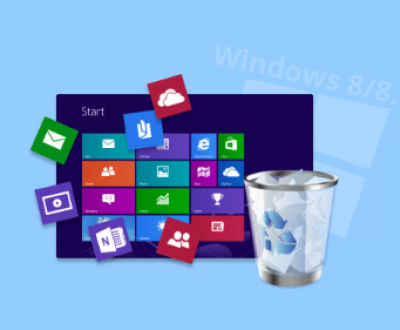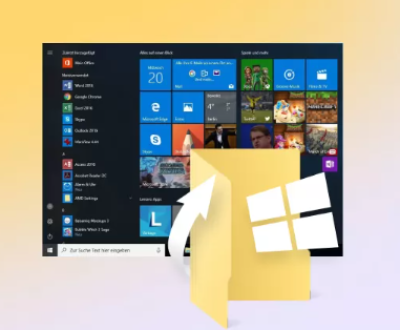Repairing a corrupt MS Project file can be a tricky and frustrating experience, especially when dealing with crucial project data. However, with the right steps, tools, and understanding of how corruption occurs, it’s possible to recover your work and minimize damage.
Causes of Corruption
Before diving into repair solutions, it’s essential to understand why MS Project files can become corrupted. File corruption may occur for various reasons, such as:
Software Crashes: MS Project might freeze or crash unexpectedly, especially during save operations, leading to incomplete data writing.

Disk Errors: If the storage device where your MS Project file is stored experiences physical failure or logical errors, it may corrupt the file.
File Transfer Issues: If you transfer a file between systems or over a network, interruptions in the transfer process can result in file corruption.
Power Failures: A sudden power loss or system shutdown during the saving process can lead to file corruption.
Outdated Software: Running an outdated version of MS Project or the Office suite may also cause compatibility issues, making your files susceptible to corruption.
Malware or Virus Attacks: Malware can damage or alter files on your system, causing them to become unreadable or corrupted.
Step-by-Step Guide to Repairing a Corrupt MS Project File
1. Use MS Project’s Built-In Repair Tool
Microsoft Project comes with a built-in repair tool designed to handle minor file corruption issues. This tool may not work for severe corruption but is a good first step.
How to Use MS Project’s Built-In Repair Tool:
Open MS Project.
Navigate to File > Open.
Select the corrupt file you want to repair.
In the file dialog, choose Open and Repair (if this option is available).
MS Project will attempt to repair the file by fixing any corrupt components, such as missing links or data inconsistencies.
2. Try Opening the File in Compatibility Mode
If you’re using an older version of MS Project or trying to open a file created in a newer version, the issue might stem from version incompatibilities. MS Project offers a Compatibility Mode, which allows you to open files created in earlier versions of the software.
How to Open a File in Compatibility Mode:
Open MS Project.
Click on File > Open.
Select the corrupt file.
In the open dialog, choose Compatibility Mode before opening the file.
This method won’t fix corruption but can make the file accessible if the issue lies in version compatibility.
3. Import the Corrupt Project File into a New Project
Another simple method is importing the corrupt project into a new project file. This process often allows MS Project to skip over corrupted data and help you recover at least part of the project.
Steps to Import a Corrupt MS Project File:
Open MS Project and create a New Project.
Go to File > Open and select the corrupt file.
Choose Import from the open dialog.
MS Project will attempt to import data from the corrupt file into the new project. You may lose some formatting or minor elements, but your core project data could be recovered.
4. Use Previous Versions or Backups
If you’ve been saving backups of your MS Project files or are using a version-controlled system, you may be able to restore an earlier version of the file.
Steps to Restore an Earlier Version Using Windows File History:
Navigate to the folder where your MS Project file is stored.
Right-click on the file and select Properties.
Go to the Previous Versions tab.
Select a previous version of the file and click Restore.
Open the restored version in MS Project to check if the corruption issue has been resolved.
5. Try Microsoft Project File Recovery Add-ins or Third-Party Tools
Panda Assistant works by scanning the storage device and identifying any recoverable files. The scanning process can be customized, allowing users to target specific types of files or particular drives for recovery. After the scan, the software displays a list of recoverable files, which can be previewed before proceeding with the actual recovery. This helps users verify that the files they need are intact and ready for restoration.
One of the most useful features of Panda Assistant is its ability to recover files from external drives, which are often prone to accidental deletion or corruption. Additionally, it supports various storage formats, including FAT, NTFS, and exFAT, making it a versatile solution for users working with different types of file systems.
Security is another key aspect of Panda Assistant. The software ensures that your recovered files are safe and that no data is overwritten during the recovery process. This makes Panda Assistant a reliable choice for users who need to restore files without compromising their data integrity.
6. Manually Repair the File (Advanced Techniques)
If you have technical expertise, you may try advanced techniques such as editing the file manually. MS Project files are stored in the .MPP format, which is a binary format. With the right tools and knowledge, you can attempt to fix the corruption by manually modifying the binary content.
Some of the more advanced methods include:
Hex Editor: Use a hex editor to analyze the structure of the MS Project file and manually edit the binary code. This method is only recommended for those with experience in data structures and binary files.
XML Conversion: If the file is saved in a format like XML, you may be able to convert it back to a working .MPP file by cleaning up the corrupt XML tags.
This technique requires caution as it may lead to further damage if not done properly.
7. Contact Microsoft Support
If all else fails and the file is crucial, consider contacting Microsoft Support. They have the tools and resources to handle advanced file corruption issues. You can submit your file for analysis, and Microsoft support may be able to offer a solution.
How to Contact Microsoft Support:
Visit the Microsoft Support website.
Choose the appropriate option for your version of MS Project.
Submit the corrupt file along with any relevant details about the issue.
Microsoft support will guide you through the next steps.
Preventing Future Corruption
While fixing a corrupt MS Project file is possible, prevention is always better than repair. Here are a few tips to prevent file corruption in the future:
Backup Regularly: Use MS Project’s built-in backup feature or rely on cloud storage services to ensure that you always have a recent copy of your project.
Use AutoSave: Turn on AutoSave to ensure your work is periodically saved.
Save in Multiple Formats: Save your MS Project file in both the .MPP format and as an XML or PDF for extra protection.
Maintain System Health: Regularly update your software, run antivirus scans, and ensure that your disk storage is in good condition.
Avoid Interruptions: Be mindful of power outages, especially when saving or working with large project files. Use an uninterruptible power supply (UPS) to prevent sudden shutdowns.
About us and this blog
Panda Assistant is built on the latest data recovery algorithms, ensuring that no file is too damaged, too lost, or too corrupted to be recovered.
Request a free quote
We believe that data recovery shouldn’t be a daunting task. That’s why we’ve designed Panda Assistant to be as easy to use as it is powerful. With a few clicks, you can initiate a scan, preview recoverable files, and restore your data all within a matter of minutes.
Subscribe to our newsletter!
More from our blog
See all postsRecent Posts
- How to recover accidentally deleted files 2025-07-01
- How do i recover a file i accidentally deleted 2025-07-01
- How to recover an accidentally deleted file 2025-07-01

 Try lt Free
Try lt Free Recovery success rate of up to
Recovery success rate of up to









